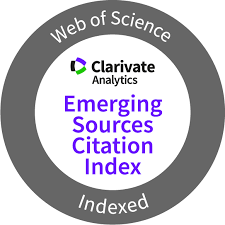Minimization model of cost associated with water consumption in soft drink industry
DOI:
https://doi.org/10.36561/ING.17.8Keywords:
Cost Minimization, Operational cost reduction, Distribution network, NLP, Generalized Bender DecompositionAbstract
In Brazil, some industries with high consumption of water are developing optimization strategies to prevent or minimize the impact of potential new cost on spring water. The model obtained for the minimization of the water consumption and its operation cost in a soft drink manufacturing facility is NLP and no convex one. This paper shows the results of the application of General Bender´s Decomposition algorithm, to a superstructure optimization problem. The use of the GBD algorithm allow nevertheless a global optimal solution which outcome was a water distribution structure with less cost than the one obtained with a traditional NLP solver -local optimum at higher cost. The solver was GAMS ® / with BDM-LP and Minos ®. A global optimum with the values for a structure, that allows a 17% cost reduction, was obtained in less than one second.
Downloads
References
Congreso Nacional de la República Paraguaya (2007). Ley N° 3239 de los recursos hídricos de Paraguay. Disponible en http://www.bacn.gov.py/leyes-paraguayas/2724/de-los-recursos-hidricos-del-paraguay
Senado y cámara de diputados de la provincia de Buenos Aires (1999). Ley 12.257 Código de aguas. Disponible en: http://www.oas.org/usde/environmentlaw/waterlaw/documents/Argentina-Codigo_de_Aguas_[Beunos_Aires]_(1999).pdf
Governo do estado de Paraná. (1999). Lei 12726, Política estadual de recursos hídricos e outras providências. Disponible en: https://www.legisweb.com.br/legislacao/?id=241036
Senado y câmara de representantes de la República Oriental del Uruguay. (2009). Ley 18610. Política Nacional de Aguas. Disponible en: http://www.ose.com.uy/descargas/documentos/leyes/ley_18_610.pdf.
N. Franqueiro y J. Alburquerque. Prospecção de ações recomendadas para a gestão estratégica de aguas subterrâneas. Anais XX Congresso Brasileiro de Águas subterrâneas, 2018. Doi: https://doi.org/10.14295/ras.v0i0.29310
A. da C. Reboucas, “Água subterrânea, fator de competitividade,” en Anales XIII Congresso Brasileiro de águas subterrâneas. RELOC – Rede Latinoamericana de Organizações de Bacia, 2000.
F. Wilkendorf, Antonio Espuña, y Luis Puigjaner, “Minimization of the Annual Cost for Complete Utility Systems,” Chemical Engineering Research and Design, vol. 76, pp. 239-245, 1998. Doi: https://doi.org/10.1205/026387698524866
J. Caballero y I. Grossmann, “Una revisión en el estado del arte en optimización,” Revista Iberoaméricana de automática e Informática Industrial, vol. 4, nº 1, pp. 5-23, 2007.
I. Grossmann, J. Caballero, y H. Yeomans, “Mathematical programming approaches to the synthesis of chemical process systems,” Korean J. Chem. Eng., vol. 16, pp. 407-426, 1999. Doi: https://doi.org/10.1007/BF02698263
C. Demirhan, W. Tso, G. Ogumerem, y E. Pistikopoulos, “Energy systems engineering,” BMC Chemical Engineering, vol. 11, nº 1, pp. 2-19, 2019. Doi: https://doi.org/10.1186/s42480-019-0009-5
T. Edgar y E. Pistikopoulos, “Smart manufacturing and energy systems,” Computers and Chemical Engineering, vol. 114, pp. 130-144, 2018. Doi: https://doi.org/10.1016/j.compchemeng.2017.10.027
L. Levente, N. Osterwalder, U. Fischer y K. Hungerbühler, “Systematic Retrofit Method for Chemical Batch Processes Using Indicators, Heuristics, and Process Models,” Industrial & Engineering Chemistry Research, vol. 47, nº 1, pp. 66-80, 2008. Doi: https://doi.org/10.1021/ie070044h.
A. Alva-Argaez, y A. Joule, “Optimal design of distributed effluent treatment system in steam assisted gravity drainage oil sand operation,” Journal of Cleaner Production, vol. 149, pp. 1233-1248, 2017. Doi: https://doi.org/10.1016/j.jclepro.2017.02.131
A. Floudas, y R. Ciric, R., “Strategies for overcoming uncertainties in the heat exchangers network synthesis”, Computers Chemical Engineering, vol. 13, nº 10, pp. 1133-1152, 1989.
A. Floudas, M. Tan y J. Broach, “A novel clustering approach and prediction of optimal number of clusters: global optimum search with enhanced positioning,” Journal of Global Optimization, vol. 39, nº 2, pp. 323–346, 2007. https://doi.org/10.1007/s10898-007-9140-6
A. M. Geofrion, “Generalized Benders Decomposition,” Journal of Optimization Theory and Applications, vol. 10, nº 4, pp. 237-260, 1972.
SANEPAR, Tabela de evolução tarifária, 2018. Disponible en: http://site.sanepar.com.br/sites/site.sanepar.com.br/files/clientes2012/tabeladeevolucaotarifaria2018.pdf
SUDERHSA, Plano diretor de drenagem para a Bacia do Rio Iguaçu na Região Metropolitana de Curitiba. Curitiba: Instituto das Águas do Paraná, 2002. Disponible en: http://www.aguasparana.pr.gov.br/arquivos/File/pddrenagem/volume3/SUD0103_WR102_FI.pdf
SANEPAR, Manual de Projeto de Saneamento. Modulo 1, 2018. Disponible en: https://site.sanepar.com.br/sites/site.sanepar.com.br/files/informacoes-tecnicas/mps-versao-2018/modulo_01_-_prescricoes_para_elaboracao_e_apresentacao_de_etp.pdf
B. Murtagh, y M. Saunders, Minos 5.51 user’s guide. Standford: Standford University, 2003.
M. Alhaider, L. Fan, y Z. Miao, “Benders Decomposition for stochastic programming-based PV/Battery/HVAC planning,” 2016 IEEE Power and Energy Society General Meeting (PESGM), Boston, MA, 2016. Doi: https://doi.org/10.1109/PESGM.2016.7741775
R. Jamalzadeh, F. Zhang, y M. Hong, “An economic dispatch algorithm incorporating voltage management for active distribution systems using generalized benders decomposition,” 2016 IEEE Power and Energy Society General Meeting (PESGM), Boston, MA, 2016. Doi: https://doi.org/10.1109/PESGM.2016.7741977
A. Diniz y T. Santos, “Feasibility and optimality cuts for the multi-stage benders decomposition approach: Application to the network constrained hydrothermal scheduling,” 2009 IEEE Power & Energy Society General Meeting, Calgary, AB, 2009. Doi: https://doi.org/10.1109/PES.2009.5275442
W. Yeh, “Optimization methods for groundwater modeling and management,” Hydrogeology Journal, vol. 23, pp. 1051–1065, 2015. Doi: https://doi.org/10.1007/s10040-015-1260-3






















